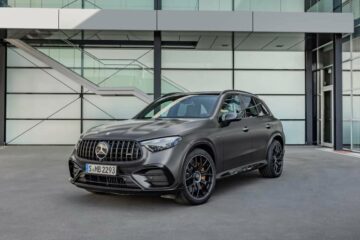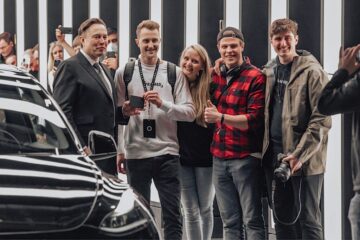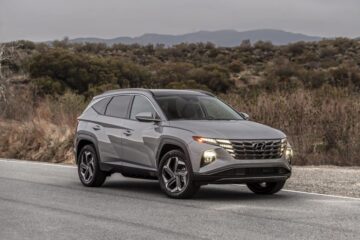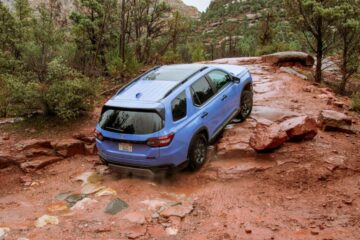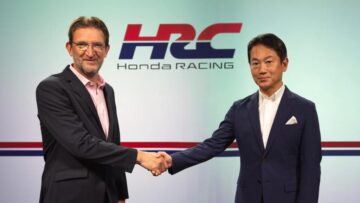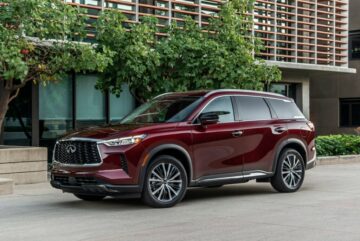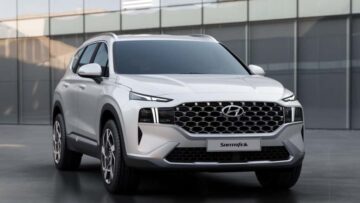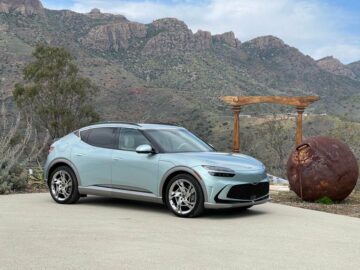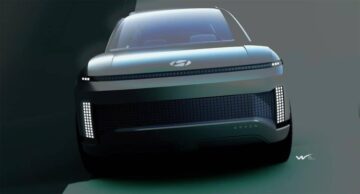With the unveiling of the three-row Kia EV9 battery electric flagship SUV, Kia is establishing a change of design direction for its Opposites United design language. We had a chance to sit down once again with Karim Habib, executive vice president and head of Kia Global Design, in Seoul, South Korea, to talk about the new vehicle and how it represents the changing nature of Kia’s design language.
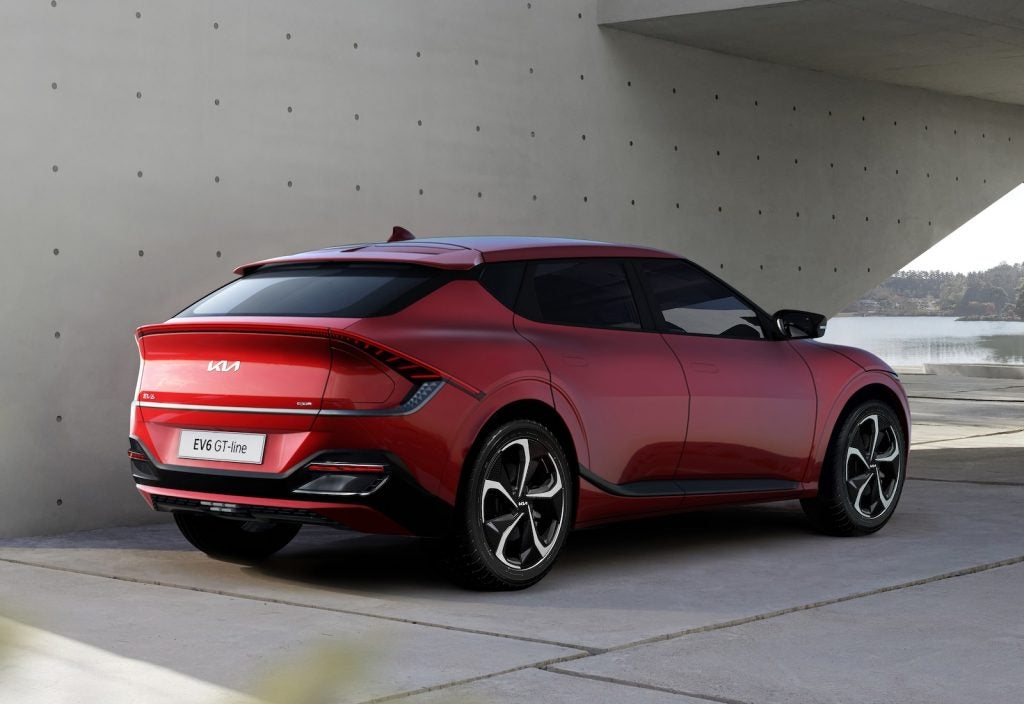
The interview that follows has been edited for length and clarity.
TheDetroitBureau.com: What model would you say was the start of Kia’s current design language?
Karim Habib: I would say with the EV9 is where we kind of reached our stride, getting more and more comfortable with the philosophy. But with EV6, we started trying to create that idea of opposites and contrasts, and richness through that.
TDB: There’s something very aesthetically different between the EV6 and EV9. Is one of those design philosophies what we’ll see going forward?
KH: You can almost see them as bookends. So, that philosophy is really is meant to be a philosophy and not a guideline for the designers. It really initially started as something internal. My job is to create a clear frame of what we achieve, but a frame that is clear, not dogma. It’s not visual guidelines that you’re meant to repeat and do in different versions. It’s more of a philosophy of culture, of contrasts in things that we do. How do you interpret them? That’s up to each and every designer to do it. And then it’s our job to make sure that it fits with the whole brand,
TDB: Did you feel that there was a need to expand beyond the design vocabulary of the EV6? Because there is some of the EV6 in the EV9; the suppleness of the of the side panel, for instance, is straight off the EV6. And while it has the strong shoulders like an EV6, it’s totally different. Was there just a need to say we can’t just make the same thing in five different sizes?
KH: Absolutely. We could have chosen to do a three-row SUV and try to make it a teardrop shape as much as possible. But we chose not to do that for a couple of reasons. Making that decision to go for something more upright with a more-strict silhouette calls for a different language to have that sleekness. But if it’s just slick, sleek and very strict in its silhouette, it felt like it maybe wouldn’t be as rich, so that’s why we wanted to incorporate some of these contrasting elements.

TDB: Did the decision to go to a square shape with the EV9’s design come from the success of the Telluride?
KH: Yes, definitely in part. But also, Kia has a bit of that history with the first Sportage, or a car that’s really big here, the Mojave.
TDB: One of the things that was mentioned on the exterior design was the increase in glass area particularly on the front. After years of windows getting smaller due to higher beltlines, are we going to see them get bigger now?
KH: It just seems appropriate for this for a couple of reasons. One is we wanted to really try and be honest about that feeling of space. So, we wanted that open view. Second, is we wanted to not have body color pillars. And then, to be honest, in the process, we had the beltline higher, and it’s always a trade-off, because the higher the beltline, the smaller the wheels look. So, we do have pretty big wheels, but it’s a big car, so we felt OK, shouldn’t we rebalance that a little bit. And, yeah, that’s why we ended up with that. But, you know, there’s advantages and disadvantages. The sort of high-water line is a pretty recognizable SUV feature; high shoulder, high beltline. Here we tried it a bit different, which maybe makes it feel a little less SUV in certain ways.
TDB: Although if you’re off road, you want larger windows you can see out. But generally, window size tends to be dictated by design trends. After years of windows becoming more like gun turrets, do you see the trend reversing?

KH: I’m not sure. I mean, for us, I think it depends on the vehicle, to be honest.
TDB: How has the acceptance of the Telluride changed how you’re approaching design?
KH: Well, we were discussing with the studio in Irvine, California about the importance of the Kia Soul. It’s very important. It a very iconic car and it kind of defined what Kia is. But then we were actually starting to realize that Kia is now more recognized for being the Telluride brand then the Soul brand for the newcomers to Kia. So, it does create that kind of different perspective. So yeah, I think the Telluride is not only changing the way we’re designing things, but the way we see each other as a brand or we see ourselves as a brand.
TDB: But the EV9 has a Soul design touch to it.
KH: It’s not that we set out to do it, but I think there’s something really cool about the anti-normal super upright rear of the Soul. And that’s something I’d like to somehow cultivate in our in our brand, even if it’s subtle and not necessarily a direct lineage, but it’s there.
TDB: Thank you, Karim.
KH: Thank you.
- SEO Powered Content & PR Distribution. Get Amplified Today.
- Platoblockchain. Web3 Metaverse Intelligence. Knowledge Amplified. Access Here.
- Source: https://www.thedetroitbureau.com/2023/03/qa-karim-habib-kia-evp-head-of-kia-global-design/
- :is
- $UP
- 2022
- 2024
- a
- About
- acceptance
- Achieve
- actually
- advantages
- After
- always
- and
- approaching
- appropriate
- ARE
- AREA
- AS
- Backend
- Bandwidth
- battery
- BE
- because
- becoming
- being
- between
- Beyond
- Big
- bigger
- Bit
- body
- brand
- by
- california
- Calls
- CAN
- car
- certain
- Chance
- change
- changing
- chose
- chosen
- clarity
- clear
- color
- COM
- come
- comfortable
- Consider
- Cool
- could
- Couple
- create
- Cultivate
- Culture
- Current
- decision
- defined
- definitely
- depends
- Design
- Designer
- designers
- designing
- dictated
- different
- direct
- direction
- discussing
- down
- each
- Electric
- elements
- establishing
- Even
- Every
- executive
- Expand
- Feature
- First
- flagship
- follows
- For
- Forward
- FRAME
- from
- front
- generally
- get
- getting
- glass
- Global
- Go
- going
- guidelines
- Have
- head
- here
- High
- higher
- history
- How
- HTTPS
- i
- iconic
- idea
- importance
- important
- in
- incorporate
- Increase
- influenced
- initially
- Inspiration
- instance
- internal
- Interview
- IT
- ITS
- Job
- jpg
- Kia
- Kind
- Know
- korea
- language
- larger
- Length
- like
- Line
- little
- Look
- make
- MAKES
- Making
- max-width
- mentioned
- model
- more
- Nature
- necessarily
- Need
- New
- newcomers
- of
- on
- ONE
- open
- Other
- panel
- part
- particularly
- perspective
- philosophies
- philosophy
- plato
- Plato Data Intelligence
- PlatoData
- possible
- president
- pretty
- process
- reached
- realize
- reasons
- rebalance
- recognized
- repeat
- represents
- Rich
- road
- same
- says
- Second
- seems
- Seoul
- set
- Shape
- Size
- sizes
- Sleek
- smaller
- So
- some
- something
- Soul
- South
- South Korea
- Space
- square
- start
- started
- Starting
- straight
- strict
- stride
- strong
- studio
- success
- Super
- Talk
- that
- The
- Them
- These
- thing
- things
- Think
- Through
- to
- TOTALLY
- touch
- Trend
- Trends
- United
- unveiling
- Upright
- us
- vehicle
- Vice President
- View
- wanted
- Way..
- ways
- What
- which
- while
- windows
- with
- would
- years
- zephyrnet

